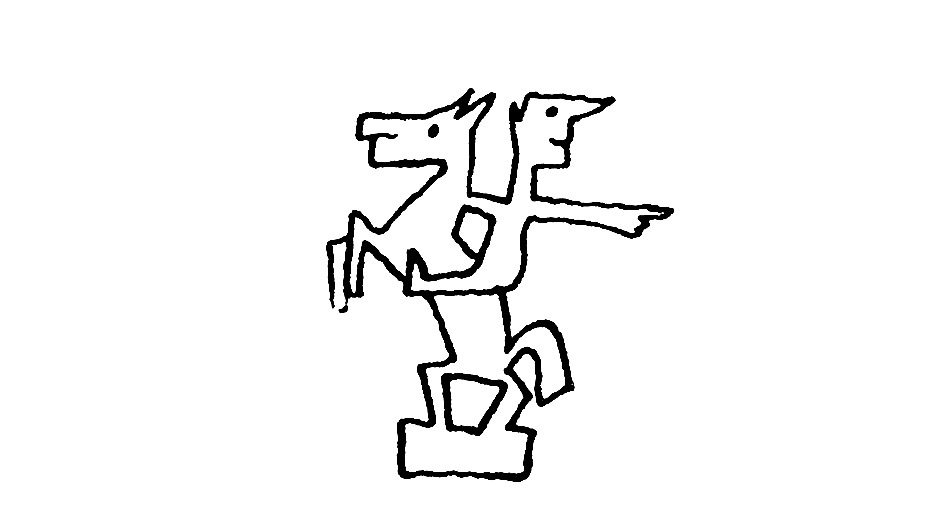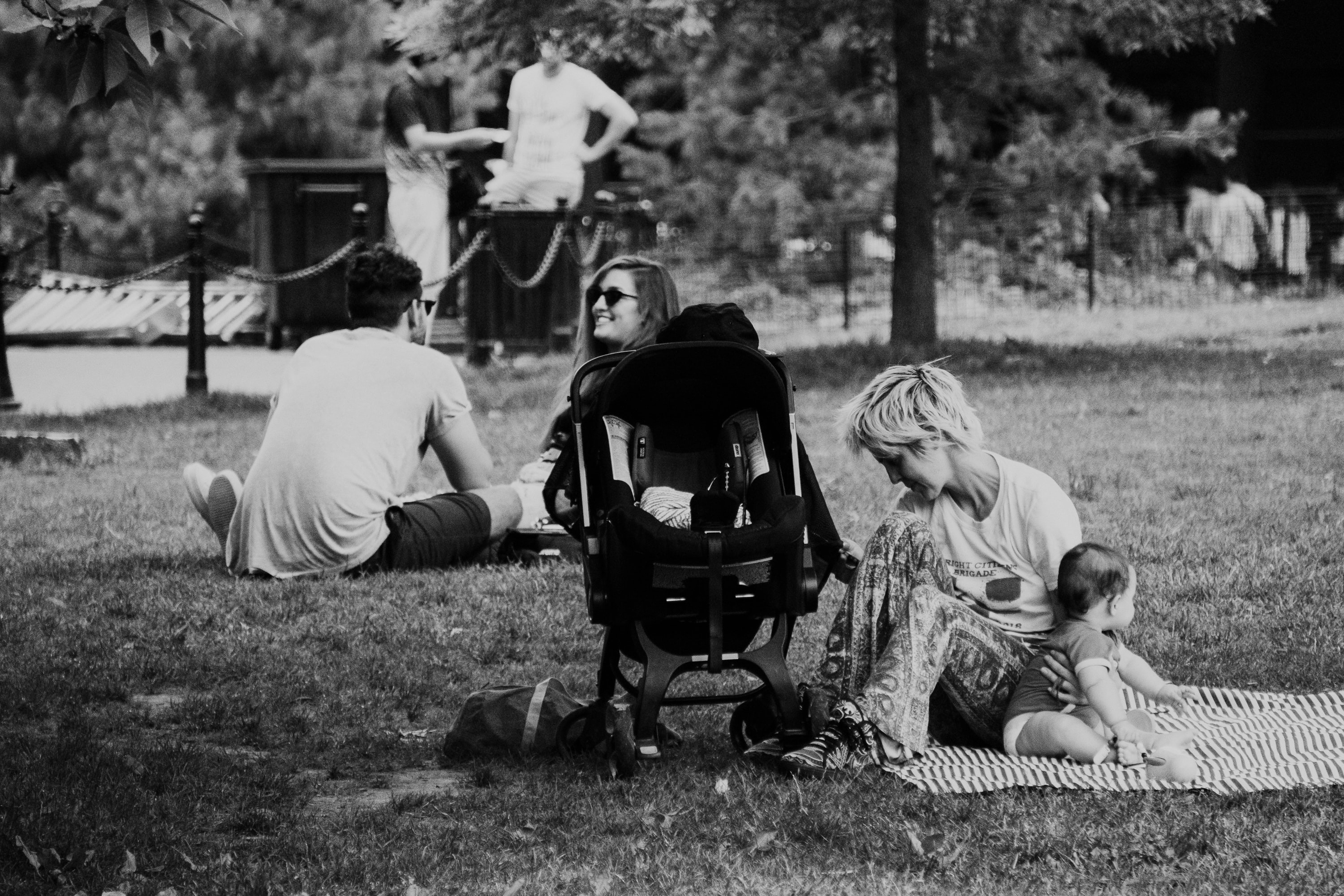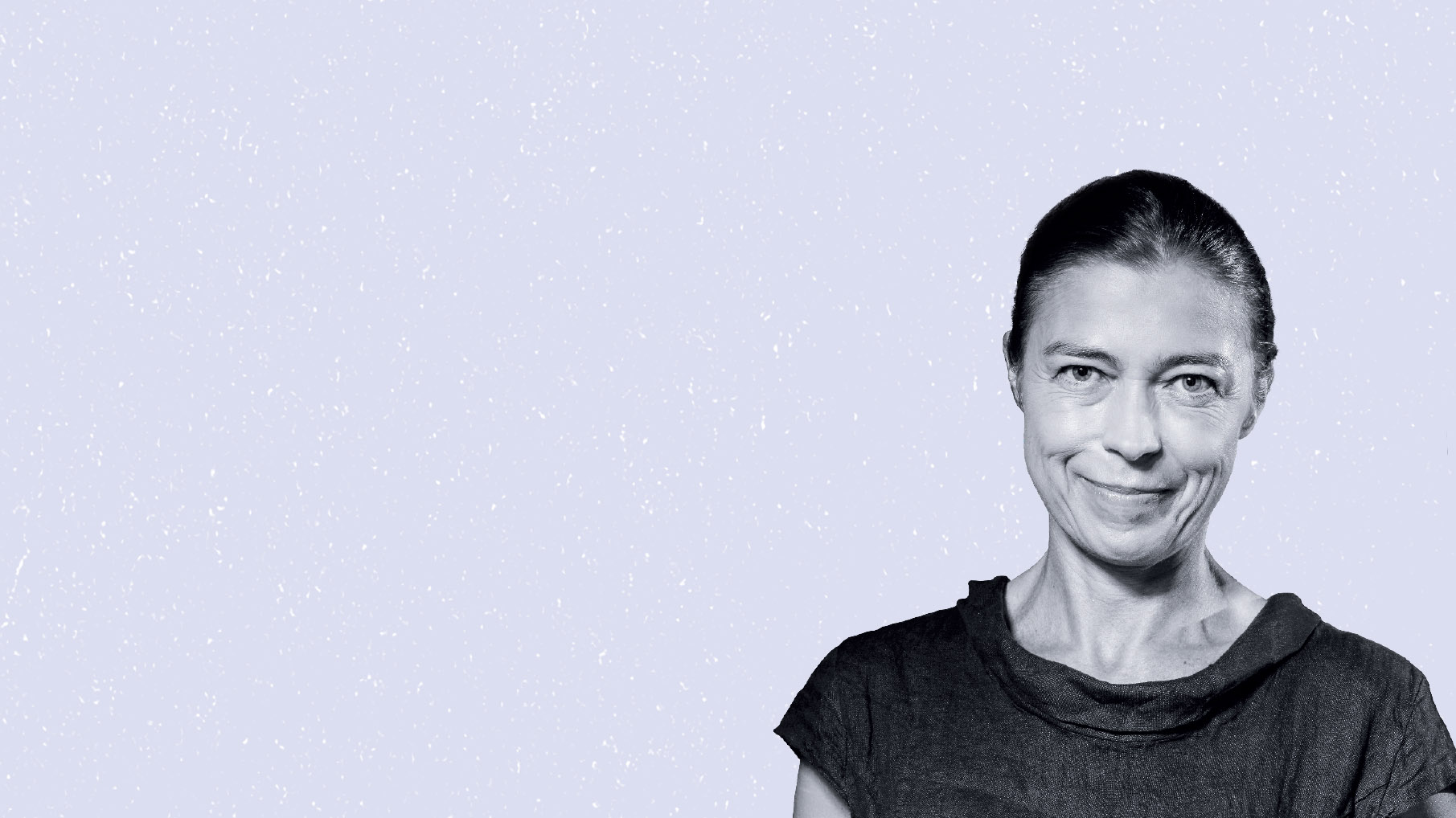
Learning not only can, but really ought to be a source of joy, according to educational neuroscientist Dr. Marzena Żylińska, in discussion with Berenika Steinberg.
I liked going to school, although I didn’t like studying. The most important time was breaktime. Lessons had their uses too—okay, the teacher might be prattling on in the background, but that didn’t stop us from whispering with friends and sending letters from desk to desk. Today, I’m trying to find out why that was the case, and if it’s possible for classes to be so captivating that the pupils don’t even notice the school bell ring.
Berenika Steinberg: I remember at seven years old I went to my first class happy. But my enthusiasm quickly waned and soon learning became an unhappy obligation. Later on, it was even hard to force myself to read books from the curriculum, even though I devoured non-syllabus books with a passion.
Marzena Żylińska: “You have to,” kills, “I want to!” As early as the 1970s, the American pedagogue John Holy wrote that education is useless if a child loses the will to learn at school. After all, every child goes to school full of enthusiasm, just like you did. They all want to learn. But then they end up in a place that can effectively deprive them of this inner motivation.
Why does that happen?
Our school system is based on the Prussian model, which was created over 200 years ago by Wilhelm von Humboldt and Karl vom Stein zum Altenstein. We could ask ourselves, “what was it once like to work on the land?” If someone from the 18th century saw a combine harvester, they wouldn’t have a clue what it was. And if they went into a modern classroom, they’d have no trouble understanding what was going on.
In what sense?
Even if there’s an interactive whiteboard instead of a blackboard, it’s still a board that the teacher stands in front of while explaining something. Pupils sit, looking at their classmate’s backs, raising a hand to answer a question, and the one who gets the best grades is the one who most faithfully reconstructs the contents of the textbook and the teacher’s words. The world around us has changed a lot, but the model of schooling remains the same. Due to the development of neuroscience, we know more and more about learning and memory processes. A few years ago, educational neuroscience emerged, an interdisciplinary research area that I hope will one day be a new scientific discipline. It requires cooperation between teachers, neurobiologists, neuropsychologists, educationalists, and textbook authors. That’s very hard, because interdisciplinarity doesn’t have a strong tradition here. The last decade of the 20th century was declared the decade of the brain. We know more and more about this organ. Of course, each brain has around eighty-six billion neurons, there’s nothing more complex, so we’ve still got a long way to go before completely understanding how it works, and we have to consider the fact that we might never fully comprehend how it functions. But we do know some things already. It’s worth using that knowledge.
So what lessons should the school system be learning?
Above all, it needs to take into account the autonomy of the student. Children have their own interests and passions. Along with their strong sides, they have their limitations. Not everyone is able to complete the same task in exactly the same amount of time. We don’t expect adults to do that. But the system requires children to all learn the same thing, at the same pace, in the same way. It also ignores the fact that children learn best through being active and experimenting. And finally, that they—like all humans, whatever their age—are internally-directed beings. Children are not filing cabinets, ready to be filled with everything we adults consider important and useful. Yet they come to school and they receive the more or less clear message: “Sit down and do as I say. Nobody cares what interests you, this is school and we’re going to follow the curriculum.” This is no criticism of teachers, they weren’t the ones who came up with this system. Children who fight for their autonomy, who want to say something themselves, do something their own way—which are their developmental needs and not just a whim—are considered naughty because they cause a disturbance.
How can we change this?
By moving away from constant testing and focusing on assessment, for instance. Get rid of those sticks and carrots! Childhood isn’t a race. We all grew up in a culture of mistakes. A child learns to write—let’s say they have to write forty letters within two guidelines. Two of them go wrong and the young person goes outside the lines. What gets marked in red by the teacher? The two botched letters, of course. The German neurobiologist Gerald Hüther explains that when a child learns to write, new neural connections must be created in their brain between the motor cortex—which allows for precise finger movements—and the visual cortex. Those essential connections are created through activity, that is, writing, practicing. The process is what matters, while we focus on the product. To learn, you need to make many attempts, many repetitions, for those connections to be created and stabilized. Will they be formed at the same time for every pupil? Of course not, that’s actually impossible, because every child’s development proceeds in a different way. But since our educational model was created two-hundred years ago, when we didn’t yet know anything about the brain, we assumed that all brains developed in the same way. We grow at different speeds, we have different eyes, we run differently, but we should all have identical brains.
How is a teacher supposed to manage without tests and grades?
Constantly testing and assessing is a bit like believing that if you constantly weigh a cow it’ll give fattier milk. But if you want a cow to give fattier milk, you shouldn’t keep weighing it, but rather take it to a meadow, provide it with fresh water, and let it do what cows enjoy doing. The same is true for children. We think that when we underline mistakes in red that children will learn. If it were that simple, they’d all be brilliant pupils.
But surely it’s good to point out mistakes so that children know what they need to work on?
It’s the teacher who has to know what needs to be worked on. As a methodologist, I often say, “People, you don’t have to underline mistakes at all.” It turns out that for many teachers, that’s basically heresy. So I tell them, “Imagine that underneath an English composition that’s full of mistakes, you simply write, ‘I had such fun reading the story about your dog. A very nice text.’ And then in your notebook you write down what that pupil still needs to work on.” If we insist on flawlessness, we hamper the learning process.
Okay, so what should school provide instead of grades and correction of mistakes?
A culture of supporting development. In a culture of mistakes, the teacher doesn’t have to think about how to plan better lessons, what materials to prepare, how to stimulate motivation. All they need to say is, “You have to learn this because there’s a test on Wednesday. And then an exam. And if you keep discussing this with me, we’ll lose more time and you’ll all fail. What good is that to you? So you’d better be quiet and just learn it.” This means I don’t actually have any arguments beyond that fail grade. Why are their brains supposed to accept this as important and useful? Just abandoning grades is far from enough. Because if lessons are still boring, if they don’t move pupils, nothing will change. Instead of constantly checking, playing cops and robbers, teachers should focus on how to rouse their pupils’ curiosity and fascination. It won’t always work, but they have to try.
We’re used to something completely different.
Today we need a totally new methodology—I call it the discreet methodology. It’s based on guiding children without depriving them of their autonomy. On the contrary, it strengthens it and creates a space for developing creativity. When a person is given an opportunity to do a task in their own way, they start to engage. So they make mistakes? Great, they’ll learn from them and move on. Because the objective isn’t to avoid mistakes, it’s the progress the child makes when working on a given task. In a culture of supporting development, the most important thing is to create conditions for learning. We’re still stuck in a methodology in which the teacher plans what pupils must do, say, and think, down to the minute. Orwell couldn’t have made it up!
You mentioned earlier that children learn best through activity. What does that mean?
Gerald Hüther says that people were not designed to learn by sitting and listening. And children least of all. How many problems at school would disappear if we let children learn in an active way? How many children who are considered difficult would turn out to be the best students? Unfortunately, the traditional methodology means children sit and listen, and are later given a task to do at home. That methodology assumes that the learning process is a direct reflection of the teaching process. But that’s not the case.
I don’t understand.
You need to know what you can pass on to another person and what you can’t. You can pass on information, but unconnected information doesn’t create knowledge. Plus you can’t pass knowledge on to anyone. Every pupil has to build the structure of their own knowledge themselves, and this is done through their agency. If the teacher is active during class, the child has no time for building their own structure of knowledge. Building it requires understanding. The child has to answer questions themselves, why and how B is linked to A, how C is linked to B, and what the relations are between these pieces of information. This can only happen when pupils are given a task during class that requires processing, using familiar concepts in different contexts. As a result of the achievements of neurobiology, we know now that the teacher’s task is not to make anything easier for pupils. The teacher has to provide them with the conditions for work that will lead to a change in the neuronal structure—that’s proof that the learning process has happened. There are no shortcuts. It’s not teachers that must be active in class, but pupils. And we keep making it easier. We write the rules in a box, in history books we put the key concepts and dates in bold in the margin—we spoon-feed. Pupils no longer have to think or comprehend anything at all. They just have to learn it by heart.
But people often think the best students are the ones who learn things by rote.
Let me refer to Gerald Hüther again, who explains it beautifully. He uses the expression brave Pflichterfüller, or “compliant duty-doers.” We all know what children gain from learning how to give the answers others expect—they do brilliantly in tests. They get high scores, they get into the schools they choose, which are usually elite places for those who do best in competitive situations. Yet, as Hüther points out—and this is a painful truth for many parents who pressure their children in this way—today the best results aren’t achieved by the pupils with the greatest potential, but those who can learn under stressful conditions and with constant competition, meeting the expectations of others.
Surely every pupil would like to do brilliantly on tests…
The problem with that is that if children learn what they have to do to pass tests—and so how to give the most typical answers and, once again, meet other peoples’ expectations—they lose their inner drive. And with that the capacity to listen to themselves, understand what they would like, what they need—the ability to set themselves their own objectives. Parents have to decide how they want to bring up their children, so that they know they can make their dreams come true, or so that someone else can employ them to realize their own. To raise an externally-directed person means depriving them of the ability to find fulfillment and having a happy, rewarding life, rather than having a carrot waved in front of their nose. That’s why in class we ought to give children tasks that give them satisfaction—to also develop their sense of agency.
Okay, so what happens inside the brain of a person who’s given that kind of task?
The brain of a compliant duty-doer—somebody who is doing something because they have to and don’t want to get a D—will never work in the same way as the brain of somebody who is learning because something fascinates them. All brain activity requires communication between neurons. Neurotransmitters are essential for this, and they’re not released at the sound of the school bell, nor when a teacher says, “Watch out, Charlie, or you’ll get a D.” They’re released when the brain recognizes that something interesting is happening, something important and necessary. Then attention and concentration switch on automatically. When something fascinates us, there’s a chance of creating flow. That’s a state in which we forget that we could go for lunch because we’re so engrossed in our work. Children can get engrossed, a lot. A little toddler sits in its pram and a dog runs past. The child’s eyes open wide and you have to tell him about that dog. In that state of delight, they remember all the information. A little child experiences delight several dozen times a day. That’s why we say, “Preserve your inner child.” That is, keep your capacity for wonder and fascination. Because that’s the state in which the brain absorbs new information fastest. So if you can tell that a teacher is saying something interesting, something that interests them, fascinates them…
…then their fascination will be conveyed to their pupils?
That’s exactly what Joachim Bauer writes about in his book, Why I Feel What You Feel: Intuitive Communication and the Secret of Mirror Neurons. Bauer points out that because of mirror neurons, we can learn through consonance and contagion. If I’m fascinated by something and can demonstrate that, then I can pass that passion on to another person. This releases large amounts of neurotransmitters into the brain. Gerald Hüther found the right metaphor—he says the brain then works like a watering can, watering our connections with those neurotransmitters. When plants are watered, they grow better and bloom. In our case, that nourishing function is performed by delight, it causes the release of neurotransmitters. When the brain works in watering-can mode—that is, in a state of fascination and enthusiasm—it can fully unlock its potential.
In the book you edited, Nurty edukacji alternatywnej w świetle wiedzy o procesach uczenia się [Trends in Alternative Education in Light of Knowledge of Learning Processes], various pedagogical ideas that differ from the Prussian model are presented. It turns out that the concepts of Maria Montessori, Rudolph Steiner, and Friedrich Fröbel have found confirmation in modern research into the brain. How is that possible? These people were developing their ideas a century ago or more.
They had intuition. That happens very often in science. Different theories are developed due to certain people’s intuition, and only later do they get scientific confirmation.
In that case, let me ask you about an educationalist you often reference. What intuition did Janusz Korczak have?
To me, Korczak was an absolute genius. Joachim Bauer says that everything Korczak wrote is being confirmed by modern neuroscience. I keep wondering how many years Korczak was ahead of his time. Because we still haven’t matured to his thinking. He said, “There are no children, there are people.” Or, “I spoke not to the children but with the children. I spoke not of what I would like them to be, but of what they would like to be and could be.” Today Gerald Hüther writes the same thing—it’s not that every child can reach every goal. Children have to grow into certain things. They grow at their own rate and you can’t speed that up, just like you can’t force the same brain development in every person. Korczak’s quotes hang on the walls of many Polish schools, but they haven’t yet found a way into our hearts and minds. That’s a shame, because then we could finally change schools, move away from the rigid base of the curriculum, and introduce completely new, flexible principles that allow for the child to be seen as a person with their own developmental needs, fascinations, abilities, shortcomings—maybe one day we’ll manage it?
Parts of this interview have been edited and condensed for clarity and brevity.
Marzena Żylińska:
Marzena Żylińska is a Doctor of Humanities in Language Didactics. For many years, she educated future teachers, now she is involved in building the Awakened School [Budzące się Szkoły] movement. Żylińska conducts training courses for teachers and parents, and creates new-generation educational materials. She dreams of schools that both pupils and teachers will attend with joy.
This translation was re-edited for context and accuracy on December 1, 2022.









